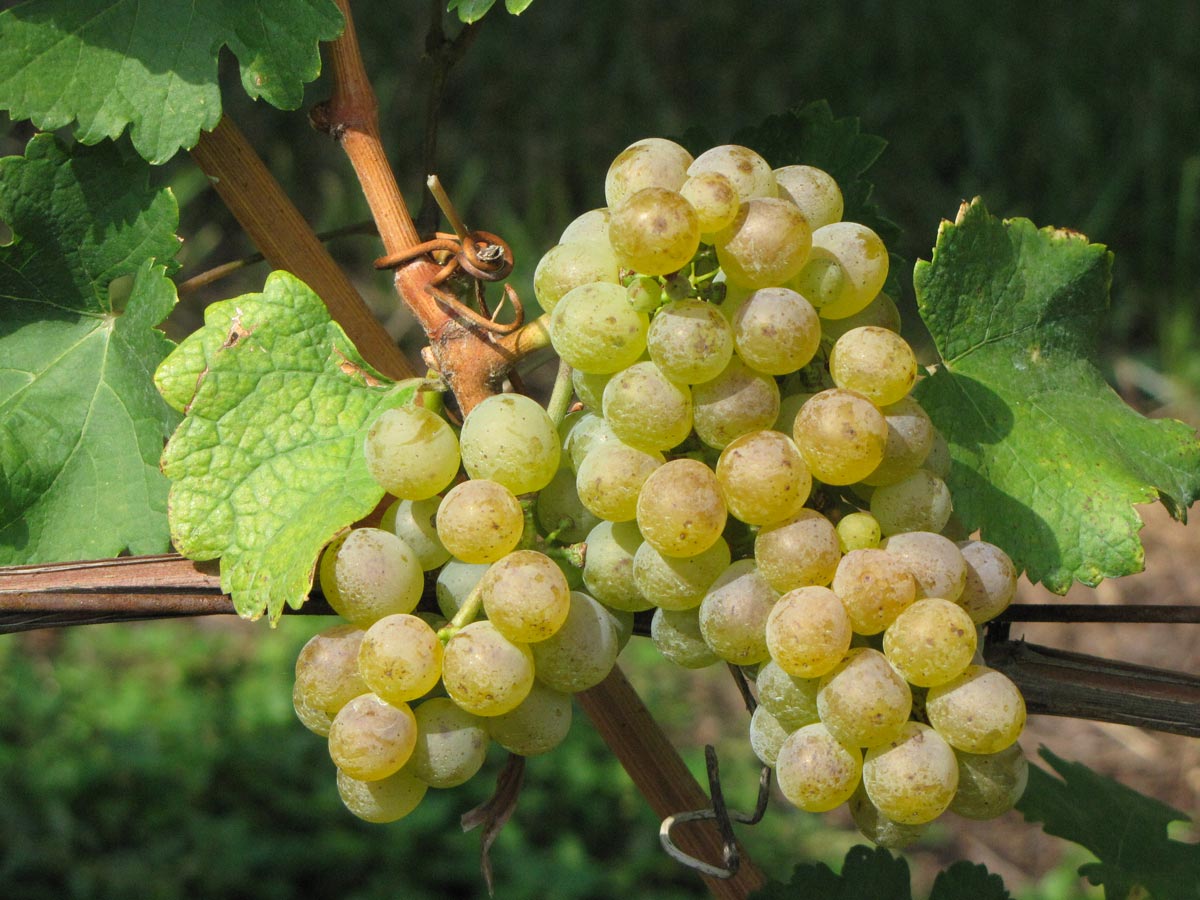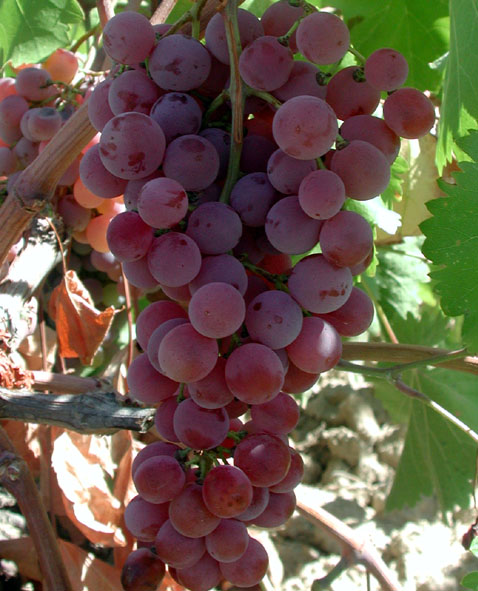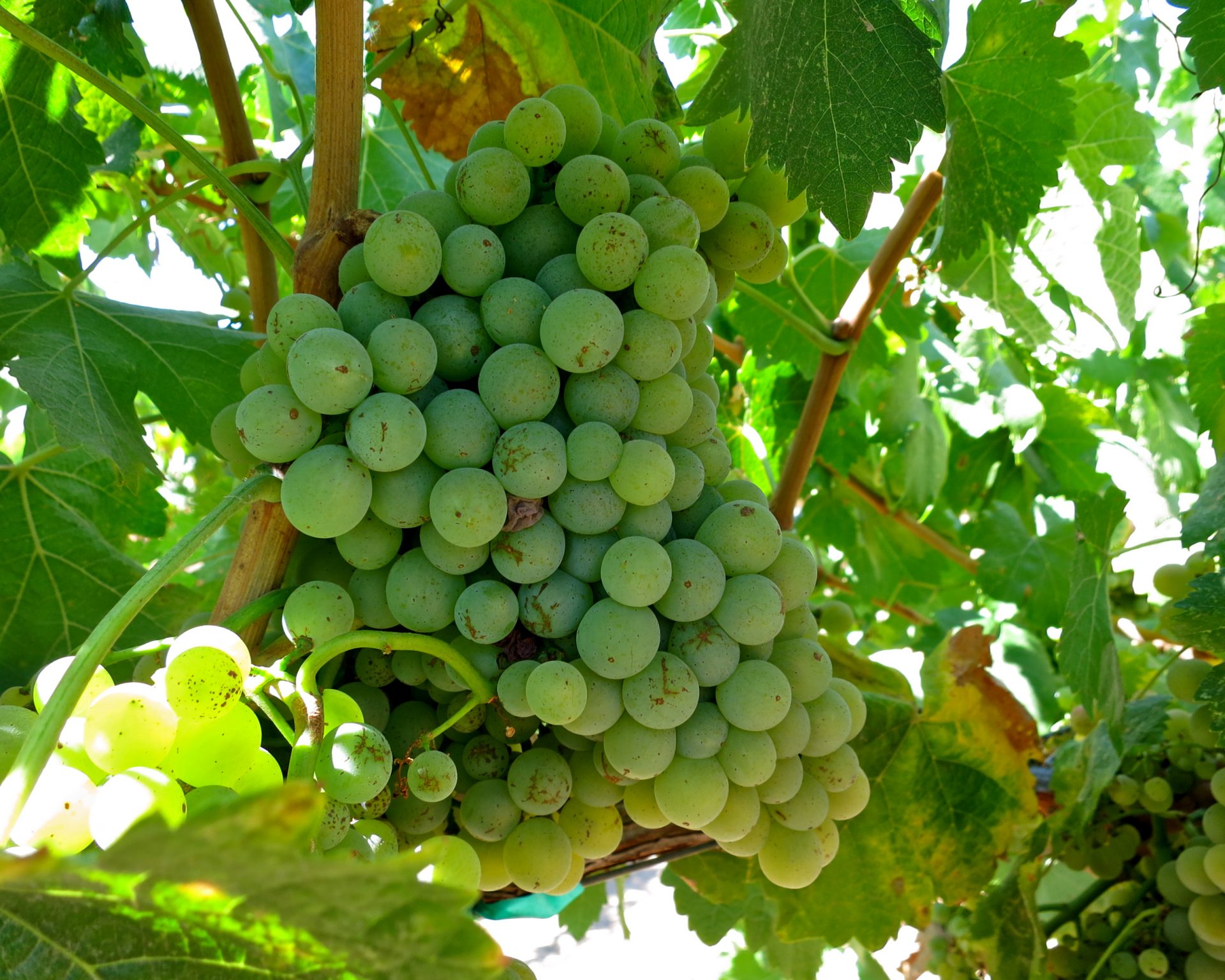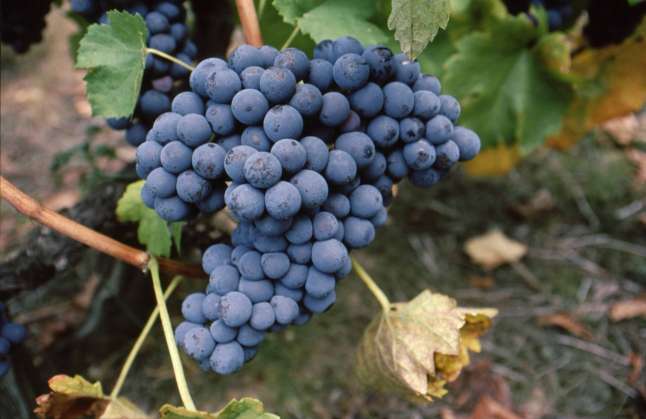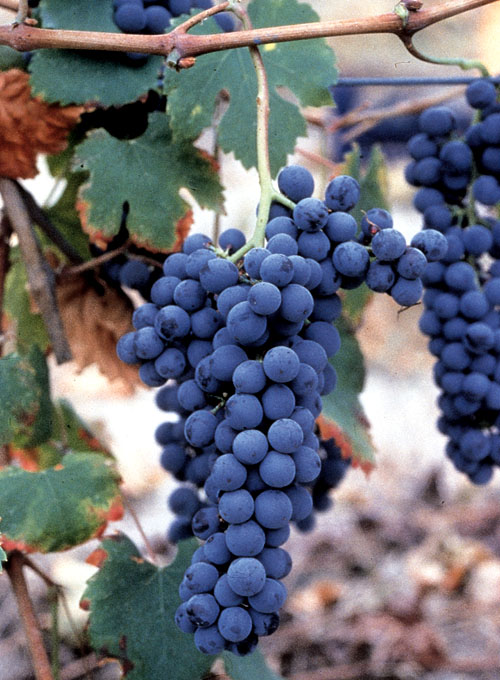
A bunch of Freisa grapes yesterday in Piemonte
When one thinks of Piemontese wine I’m guessing that one’s mind thinks of the exalted wines of Barolo, Barbaresco, and Roero, all produced with the undoubtedly noble Nebbiolo varietal. Of course if one is a little better versed in the grapes of the region then one may be privy to the pleasures that can be found in the better wines made from the indigenous Barbera and Dolcetto. These were grapes that for many years were banished to the lesser slopes of the rolling Piemontese hillsides, the better vineyards being, until relatively recently, almost exclusively reserved for the Piemontese vinous nobility… by which I mean all that snobby Nebbiolo.
It’s often said that Barbera and Dolcetto are the wines that the locals drink until the mighty Nebbiolos have spent enough time in bottle to make themselves in any way palatable, but I feel that more often than not the choice to drink these two fascinating varietals has a lot more to do with the occupancy of one’s pocketbook more than anything else, with Barbera and Dolcetto capable of producing extremely well-made, delicious wines at relatively affordable prices.
But there is actually a fourth very traditional red varietal that one rarely hears of unless one has the opportunity to sit down for dinner with a Piemontese family, and after the often delightful white Arneis I can bet you that it’s probably the first wine that you are offered.
Friesa (Fray-Zah) is a long established and yet reasonably obscure red grape found mainly in the Monferrato and Langhe subregions of Piemonte surrounding Alba, and extremely rarely outside of this area. The name means Strawberry in the local dialect, which interestingly enough is closer the French Fraise than it is to the Italian Fragola.
The grape is morphologically similar to Nebbiolo, with which it shares the same Autumnal colouring of its leaves, and matching high tannin levels. More often than not Friesa is vinified so as to produce a mellow, slightly effervescent wine through a secondary fermentation of the residual sugars left over after the primary fermentation. The aromatics are often reminiscent of raspberries and occasionally, believe it or not, strawberries, although perhaps with not the same expressiveness and exuberance that one can find in Beaujolais. There is also often a fascinating earthy quality to these wines coupled with an inherent tartness and a deliciously defined amount of taut tannic austerity. Did I mention that it’s also reputed to have mysterious aphrodisiacal qualities?
The wines can be polarizing, that is for sure. I find it immensely amusing that the great Hugh Johnson speaks of Friesa’s wines as being “immensely appetizing” whilst that pompous windbag Robert Parker Jr. calls them “totally repugnant wines”. You see where I am going with this, right?
They barely make enough Freisa to export, but if you ever come across any of it please grab a few bottles and drop me an email… I love the stuff.
 Edinburgh-born/Toronto-based Sommelier, consultant, writer, judge, and educator Jamie Drummond is the Director of Programs/Editor of Good Food Revolution… And he seems to remember being quite fond of that Freisa from Montevina… an oddity, but quite lovely.
Edinburgh-born/Toronto-based Sommelier, consultant, writer, judge, and educator Jamie Drummond is the Director of Programs/Editor of Good Food Revolution… And he seems to remember being quite fond of that Freisa from Montevina… an oddity, but quite lovely.



